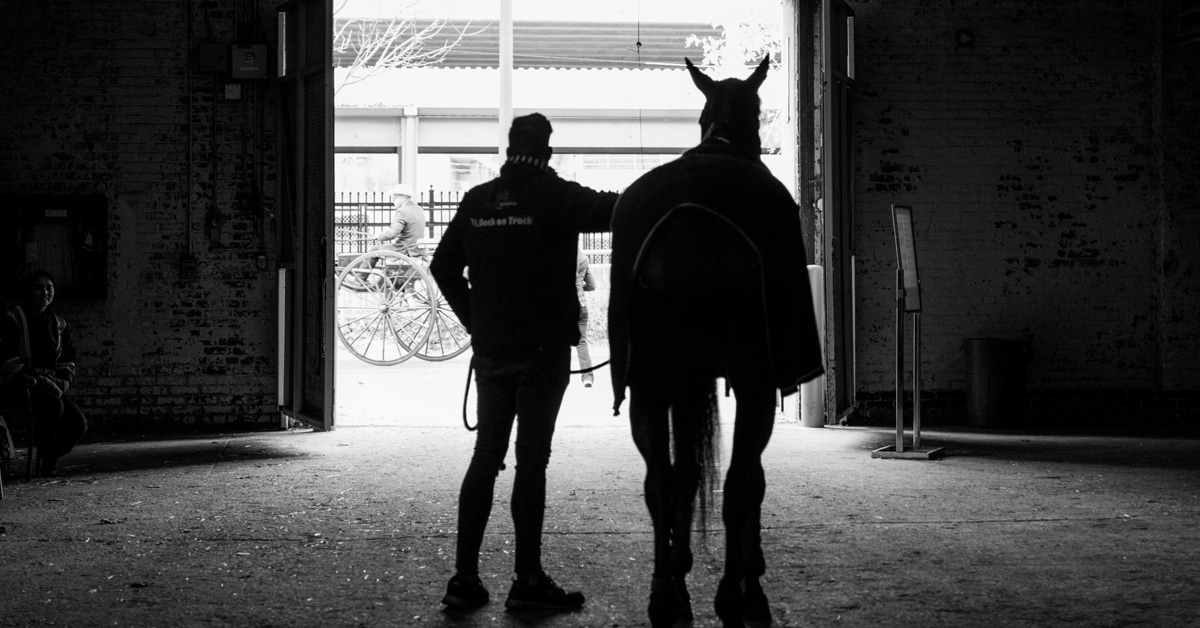If you have noticed that shavings are harder to find, cost more, and take longer to arrive at your barn, you are not alone. The slowed production or even closure at lumber mills across Canada, especially in BC and Quebec, is responsible, and those in the bedding industry are warning that it is going to get worse.
Thomas Harbom from Champion Shavings, which has 10 plants across the country and in the US and a head office in Ontario, says “We’re seeing the same problem almost everywhere.” Shavings are a byproduct of the lumber industry, and when there is less demand for lumber, whether for housing or export, the immediate effect is that there are fewer offcuts to make shavings with. Harbom advises that price and availability always fluctuate depending on the price per board foot, which affects the byproduct industry including those who make shavings for horses, or pellets for bedding or wood stoves, or even particle boards, all of which are made of compressed shavings.
“When the market tightens up the way it is right now, the price per board foot is down so there is no incentive to mill more wood. There is a glut of finished pre-cut wood inventory on the market, which has driven the price down and contributed to the slowdown. Some mills have laid off several shifts and some of them have shuttered altogether.”
The US tariffs on softwood lumber have definitely played a factor, as some multinational companies just shifted their production south of the border to avoid the tariffs altogether. Bidding wars for raw materials among shavings and pellet suppliers are not uncommon, also driving prices up. “We’ve already seen prices climb pretty much since May of this year,” says Harbom, adding that farm managers can expect delays of up to eight weeks to receive a shipment of shavings these days. Currently, prices in Ontario are in the $5/bag range, but a check on hayexchange.com shows a wildly fluctuating array of prices across Canada and the US from about $3.50 to $8 a bag.
Some horse owners may choose to switch to straw, but depending on where you live, straw prices are also up because of a poor harvest due to weather. This in turns drives up the shavings demand and costs. A report in the Goderich Signal-Star indicated that while in most years the price per pound has been in the 3.5-4 cent range, this year wheat straw has been selling from six to 10 cents a pound, with some pre-harvest prices going as high as 20 cents a pound at auction, making straw worth more than the grain itself.
We reached out to a couple of other Canadian shavings suppliers to get their take on the issue. Ben Vanderzwan, manager and director of operations at Fraser Valley Hay Brokers in BC, remarked, “It has been affecting us for a while now. Our biggest selling commodity is actually wood pellets for horse bedding. Our suppliers are struggling to get the necessary materials they need to keep up with demand.
Pellets and shavings will most likely go up in price this winter. Our pellets mill has most of their demand in the winter months, both for horse bedding and for wood stoves. They have strong international demand for their product, but not enough supply of their raw material. The thing is that the prices go up ‒ but never do they come down.”
Steve Kratz of Wood Shavings Ontario in West Montrose, a company that has been in business for over 50 years, says, “All of my suppliers are in Ontario; however, most are not as busy as other years. With straw prices as high as they are, the possibility of a shaving shortage is extremely high.”
So what is a horse owner to do? “Unfortunately, they’re to expect prices to be up this winter,” says Harbom, advising, “Order early to make sure that you get your requirements in time.”
He concludes with a warning. “We’ve been through this before; this is not the first time we’ve seen a shavings shortage. The last time that we had a shortage was in 2008 during the housing crisis. They stopped building new houses, so they stopped cutting lumber. No lumber meant no shavings ‒ it was a disaster. What I’m being told is that it will be the same, or possibly worse, this winter.”
More News









